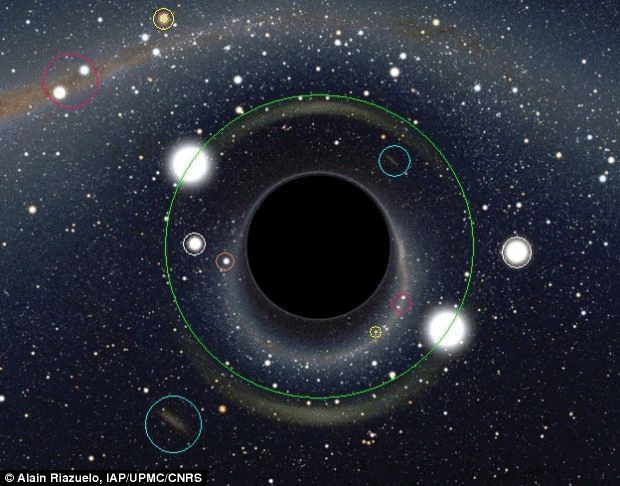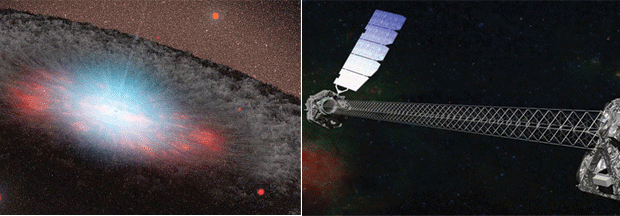|
NASA's newest space telescope — a black hole-hunting
observatory — unfolded a giant mast in orbit Thursday, one of the final
steps before it can begin peering deep into the universe.
The $165 million Nuclear Spectroscopic Telescope Array (NuSTAR) is an
X-ray observatory designed to study some of the most energetic and
mysterious places in the universe through X-ray light. In order to focus
these very short-wavelength, high-energy light rays, the telescope must
separate its light-gathering optics from a focal point a distance away.
|
|
 |
|
That's where NuSTAR's mast comes in. The 33-foot (10-meter) boom made of
stackable cubes formed by carbon fiber rods serves to distance the
telescope's two X-ray optics from the focal point where its camera is
placed.
"The high energy nature of the mission means we're trying to push beyond
the conventional X-ray band, what we call soft or low-energy X-rays,"
said William Craig, NuSTAR instrument manager at the University of
California at Berkeley. "Mirrors can reflect or bend high-energy X-rays,
but they can only put in a little glancing angle, so it takes a long
distance for it to come to focus. It turns out that 10 meters is the
right one to give the focus and energy range we need."
The mast began extending from its storage canister Thursday at 1:40 p.m.
EDT. The process took about 28 minutes for the mast motor to crank out
the structure. It wrapped up by around 2:10 p.m. EDT, with the mast
fully extended and apparently functioning as planned.
|
|

|
|
"The mast has deployed! We are on our way to getting the best views yet
of high-energy X-rays in our universe!" the telescope's team wrote on
Twitter after the event.
The NuSTAR observatory is expected to begin its normal science mission
July 31.
The NuSTAR mission launched June 8 and has been going smoothly so far.
Its planners, who have devoted years to preparing the spacecraft, say
it's a heady feeling to have it finally in space.
"Its tremendous, there's no better feeling in the world really," Craig
told Space.com Wednesday. "You work through development of the
technology, getting it through the NASA process to get it funded, and
now it's just going surprisingly well. I think the entire team is
excited right now."
|
|

|
|
Now only one more major step stands between NuSTAR and the start of its
operations. Scientists are planning to instruct the telescope to turn on
its X-ray detectors Friday.
Afterward, NuSTAR will point its X-ray eyes at the nearby black hole
Cygnus X-1, which is in our own galaxy. These observations should allow
mission controllers to test the telescope's focus, and also gather
better pictures of Cygnus X-1 than have been available before in this
energy range. |